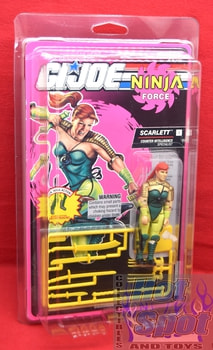Specialty Items
Here is a sample of some of the oh so many Fun, Great, Rare and Unusual items that have passed thru our store over the years. Looking forward to seeing what the next few years bring our way! 
If you have a Need or Hankering for a rare specialty item? Or have one you have been looking to sell, CLICK HERE to contact us. We can find just about anything. Looking to sell we would love to see what you have and maybe add it to or inventory.
Basic Artwork Terminology
What is a Giclee Transfer?
Giclée printing (pronounced Jee-clay) is commonly considered to be the highest quality digital reproduction technique for fine art. It starts with an extremely high resolution, detailed scanning process during which the image and topography of the original artwork are captured into a digital file. Then the giclée prints are created using specialized printers that literally spray the image onto a substrate such as canvas, paper, etc. This process creates a final product that, on some mediums, is almost indistinguishable to the naked eye from painted originals.
Once the Giclee printing process has been completed onto the appropriate medium, It is then hand trimmed and treated with a coat of varnish which protects the canvas from moderate amounts of scuffing, UV light exposure, moisture and humidity. Some editions are then hand embellished personally by, or in collaboration with, the artist in order to bring an even greater degree of depth and texture to the piece. Embellishments are applied using colored acrylic paint that is complementary to the image, as well as a clear acrylic gel which adds texture and dimension to the original brushstrokes that are visible in the print.
Each piece is then carefully inspected for quality and upon passing inspection, goes on to be hand signed by the artist. Once the artist signs the artwork, each piece is then individually hand numbered in accordance with the edition size.
Giclee - Hand Embellished
Hand Embellished Giclee is a high-quality, fine art digital print process that is enhanced by an artist or a skilled craftsman who adds additional details, texture or touches to the print by hand. The hand embellishment process adds an extra layer of artistry and uniqueness to the print, as the artist adds their own personal touch and creativity to the artwork. This process often involves the use of additional media, such as paint or ink, or the use of specialized tools, such as brushes or stamps, to create texture and depth, resulting in a truly one-of-a-kind piece of art.
What is a Serigraph?
A serigraph can most easily be defined as a silk-screen or screen-print, albeit a very sophisticated and labor intensive one. Using the original artwork as the master guide, each color is carefully hand separated into individual elements and burned onto separate screens. The serigraph is then created by screening each color, one by one, onto the substrate (i.e. paper, canvas, etc.) thereby layering all the colors into their proper locations, pass by pass, through a process of physically pushing the ink through the openings in each of the color screens, ultimately combining to build the final image.
It is a painstaking, labor intensive and very precise technique, both in the color separating process and in the ability to keep all the screens in proper “registration” with one another throughout the lengthy process of laying down so many individual colors during multiple screen passes.
Considered a “traditional” printmaking technique because it is an analog process, serigraphy does not traditionally employ the use of a computer, but rather the careful artistic eye and technique of a master printer and color separator.
What is a Lithograph?
A lithograph is a printing method which dates back more that 200 years. It began with “stone lithography,” a process by which an artist’s work was rendered onto a stone and with the use of various solutions that either attract or repel ink, the stone essentially became a stamp which could be pressed or rolled onto paper to transfer the image.
The modern version of this technique is a process called “offset lithography”. Before a lithograph can be produced, the image is separated into four colors: Cyan (Blue), Magenta (Red), Yellow and Black (i.e. CMYK). Since most colors in the spectrum originate from these colors, when they are combined to varying degrees, they can reproduce most color that may be found in the original work. For this reason, this process is also commonly referred to as “Four Color Process” printing.
Offset lithography operates on a very simple principle: ink (which is oil based) and water don’t mix. First, each of the four separated colors are transferred to their own individual aluminum plate. During the printing process, each plate is dampened first by water, then ink. The ink adheres to the image area, the water to the non-image area. The image on the aluminum plate is then transferred like a stamp onto a rubber blanket creating a negative image, then the rubber blanket is rolled across the paper to create the final positive impression of that color onto the lithograph. When all four colors are layered onto the same paper sheet (and in proper registration) they combine to create the final image.
What is Hand-Deckled Paper?
The term “hand deckled” is used to describe the finished edge of certain giclées or serigraphs which are printed on paper. The edges of a hand deckled print undergo a “controlled tear” giving the edges a rough, jagged pattern as opposed to the clean straight edge of a print that is trimmed with a blade. An example of this type of finish work can be seen in the Toby Bluth portfolio. When framed, such prints are often “floated”, which places the matting well outside the edges of the paper so that the hand torn edges are visible.
What is a Gallery Wrap?
Gallery Wrapped is a type of fine art presentation that is purposely without a frame. The canvas is stretched across thick wooden stretcher bars and then held in place with staples on the back, thereby hiding the staples when the art is hung on the wall. The result is that the image, as well as the “wrapped” edges, are visible. Some artists choose to utilize additional dimensionality to the art by using the four outer edges as additional space to create imagery, while others choose to use solid colors to draw more attention to the conventional “front” of the piece. Although it’s not necessary, it is still possible to frame a gallery wrapped image if desired.
What is a Certificate of Authenticity?
A Certificate of Authenticity (COA) is a document that provides evidence that a particular item or artwork is genuine and has been produced by a particular artist. The COA typically includes information about the item, such as its title, medium, dimensions, and date of creation, as well as information about the artist, such as their name.
COAs are commonly used in the art world to establish the provenance of an artwork and to help buyers and collectors verify its authenticity. They are particularly important for one-of-a-kind or limited edition pieces, where the value of the artwork is often determined by its rarity and uniqueness.
A COA can be issued by the artist themselves, or by a third-party authentication service. Some art dealers and galleries also issue COAs for the pieces they sell. The COA should be signed and dated, and may also include a unique identification number or hologram to prevent forgery or duplication.
It is important to note that while a COA can provide some level of assurance about the authenticity of an artwork, it is not a guarantee. The best way to ensure the authenticity of an artwork is to purchase it from a reputable source and to do your own research on the artist and their work.
















































































